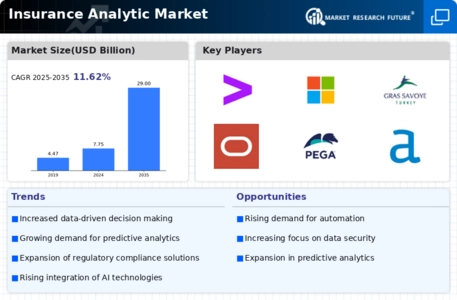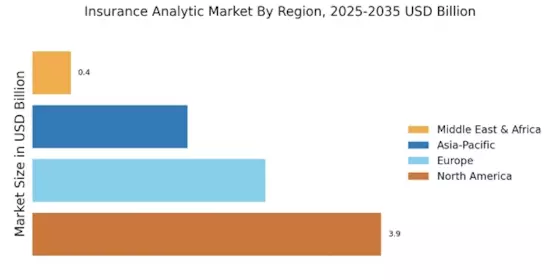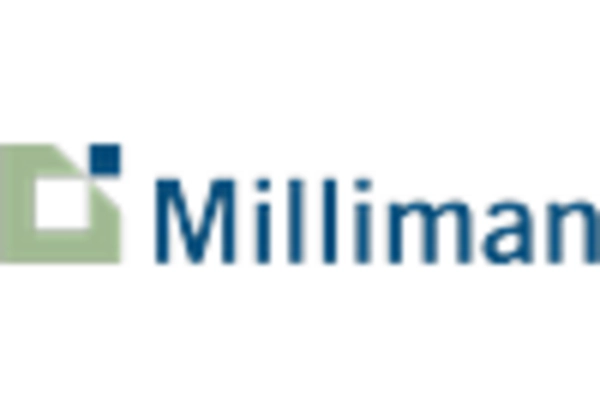Enhanced Regulatory Compliance
The Insurance Analytic Market is increasingly influenced by the need for enhanced regulatory compliance. Insurers face mounting pressure to adhere to stringent regulations, necessitating the implementation of robust analytics solutions. These solutions assist in monitoring compliance, detecting fraudulent activities, and ensuring transparency in operations. As regulatory frameworks continue to evolve, it is projected that the market for compliance analytics will grow significantly, with estimates suggesting a potential increase of 15% annually through 2026. This trend highlights the critical role of analytics in navigating the complex regulatory landscape, thereby reinforcing the importance of compliance within the Insurance Analytic Market.
Integration of Advanced Technologies
The integration of advanced technologies, such as artificial intelligence and machine learning, plays a pivotal role in the Insurance Analytic Market. These technologies enable insurers to process and analyze large datasets more efficiently, leading to improved underwriting and claims management. The adoption of predictive analytics is particularly noteworthy, as it allows insurers to anticipate customer behavior and tailor products accordingly. As of 2025, it is estimated that over 60% of insurance companies will implement AI-driven analytics solutions, enhancing operational efficiency and customer satisfaction. This trend underscores the necessity for insurers to adapt to technological advancements to remain competitive in the evolving landscape of the Insurance Analytic Market.
Growing Importance of Risk Management
Risk management has become increasingly critical within the Insurance Analytic Market. Insurers are now focusing on utilizing analytics to identify, assess, and mitigate risks more effectively. The rise in natural disasters and cyber threats has prompted companies to adopt sophisticated risk modeling techniques. Recent data indicates that the global insurance industry is expected to allocate approximately 20% of its IT budgets to analytics solutions aimed at risk management by 2025. This shift reflects a broader recognition of the value of data analytics in enhancing resilience and ensuring sustainability in the face of emerging risks. As a result, the Insurance Analytic Market is evolving to meet these pressing challenges.
Shift Towards Customer-Centric Models
The shift towards customer-centric models is reshaping the Insurance Analytic Market. Insurers are increasingly prioritizing customer experience and satisfaction, leveraging analytics to gain insights into customer preferences and behaviors. This trend is evidenced by the growing investment in customer analytics tools, which are projected to account for nearly 30% of total analytics spending in the insurance sector by 2025. By understanding customer needs and tailoring products accordingly, insurers can enhance retention rates and foster loyalty. This customer-centric approach not only drives revenue growth but also positions companies favorably in a competitive market, underscoring the transformative impact of analytics in the Insurance Analytic Market.
Rising Demand for Data-Driven Insights
The Insurance Analytic Market experiences a notable surge in demand for data-driven insights. Insurers increasingly rely on analytics to enhance decision-making processes, optimize risk assessment, and improve customer engagement. According to recent estimates, the market for insurance analytics is projected to reach USD 15 billion by 2026, reflecting a compound annual growth rate of approximately 12%. This growth is driven by the need for insurers to leverage vast amounts of data generated from various sources, including IoT devices and social media. Consequently, the Insurance Analytic Market is witnessing a transformation as companies invest in advanced analytics tools to gain competitive advantages and foster innovation.


















Leave a Comment